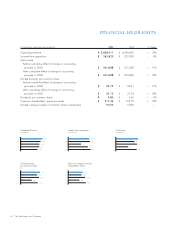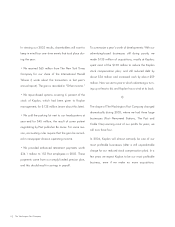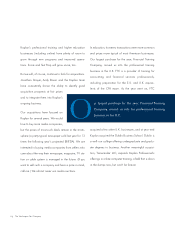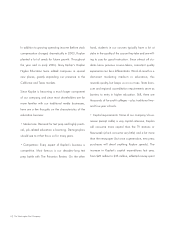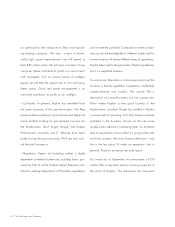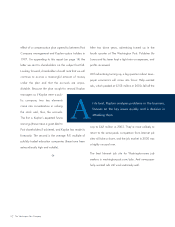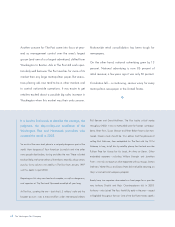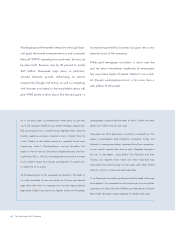Washington Post 2003 Annual Report Download - page 7
Download and view the complete annual report
Please find page 7 of the 2003 Washington Post annual report below. You can navigate through the pages in the report by either clicking on the pages listed below, or by using the keyword search tool below to find specific information within the annual report.
In addition to growing operating income (before stock
compensation charges) dramatically in 2003, Kaplan
planted a lot of seeds for future growth. Throughout
the year and in early 2004, Gary Kerber’s Kaplan
Higher Education team added campuses in several
new places, greatly expanding our presence in the
California and Texas markets.
Since Kaplan is becoming a much larger component
of our company, and since most shareholders are far
more familiar with our traditional media businesses,
here are a few thoughts on the characteristics of the
education business:
•Market size: Demand for test prep and highly practi-
cal, job-related education is booming. Demographics
should see to it that this is so for many years.
•Competition: Every aspect of Kaplan’s business is
competitive. Most famous is our decades-long test
prep battle with The Princeton Review. On the other
hand, students in our courses typically have a lot at
stake in the quality of the course they take and are will-
ing to pay for good instruction. Since almost all stu-
dents know previous course-takers, consistent quality
experience can be a differentiator. Word-of-mouth is a
dominant marketing medium in education; this
rewards quality, but keeps us on our toes. State licen-
sure and regional accreditation requirements serve as
barriers to entry in higher education. Still, there are
thousands of for-profit colleges—plus traditional two-
and four-year schools.
•Capital requirements: None of our company’s busi-
nesses (except cable) is very capital-intensive. Kaplan
will consume more capital than the TV stations or
Newsweek (which consume very little) and a bit more
than the newspaper (but once a generation, new press
purchases will dwarf anything Kaplan spends). The
increase in Kaplan’s capital expenditures last year,
from $23 million to $35 million, reflected money spent
05 The Washington Post Company



